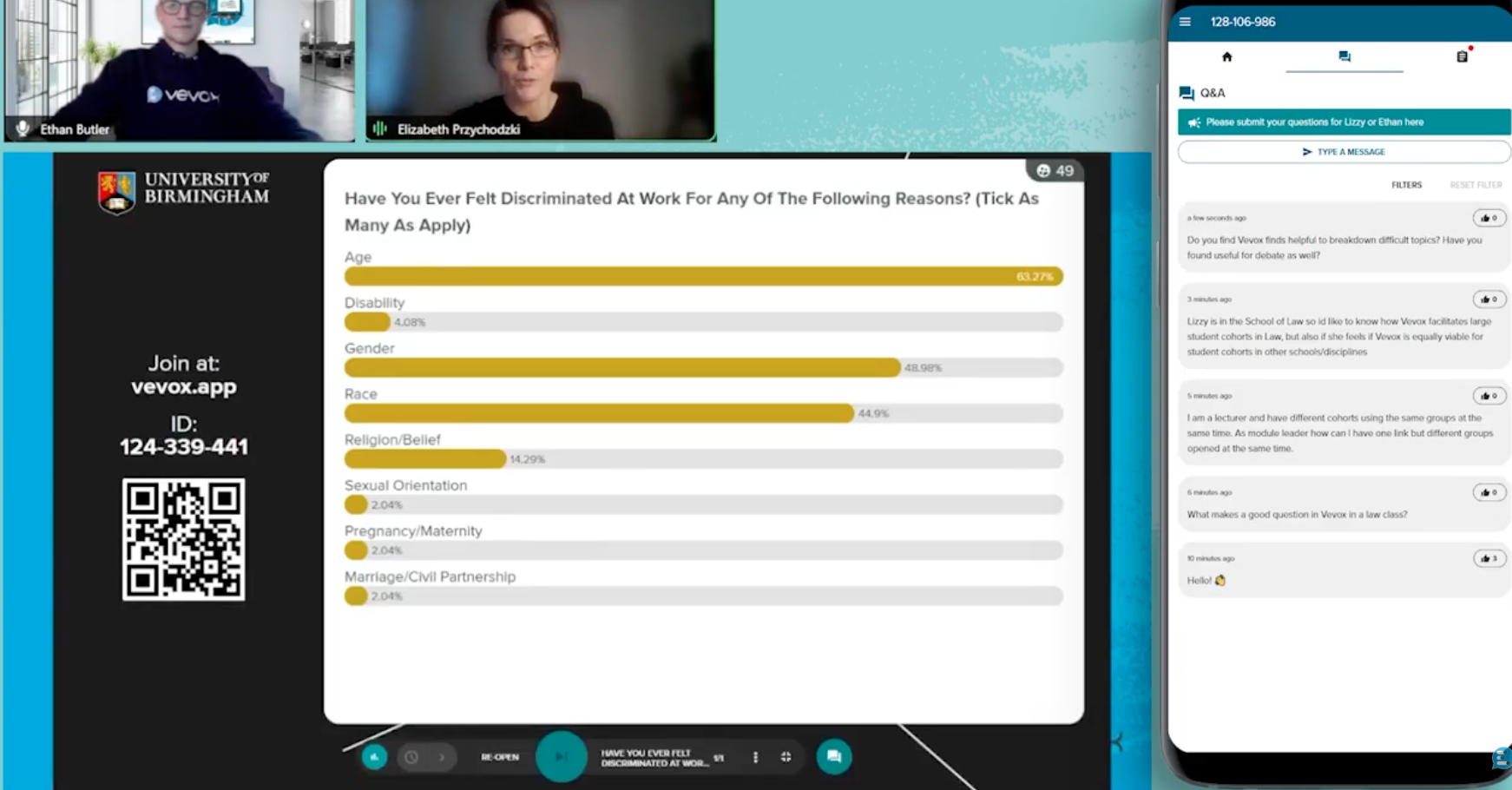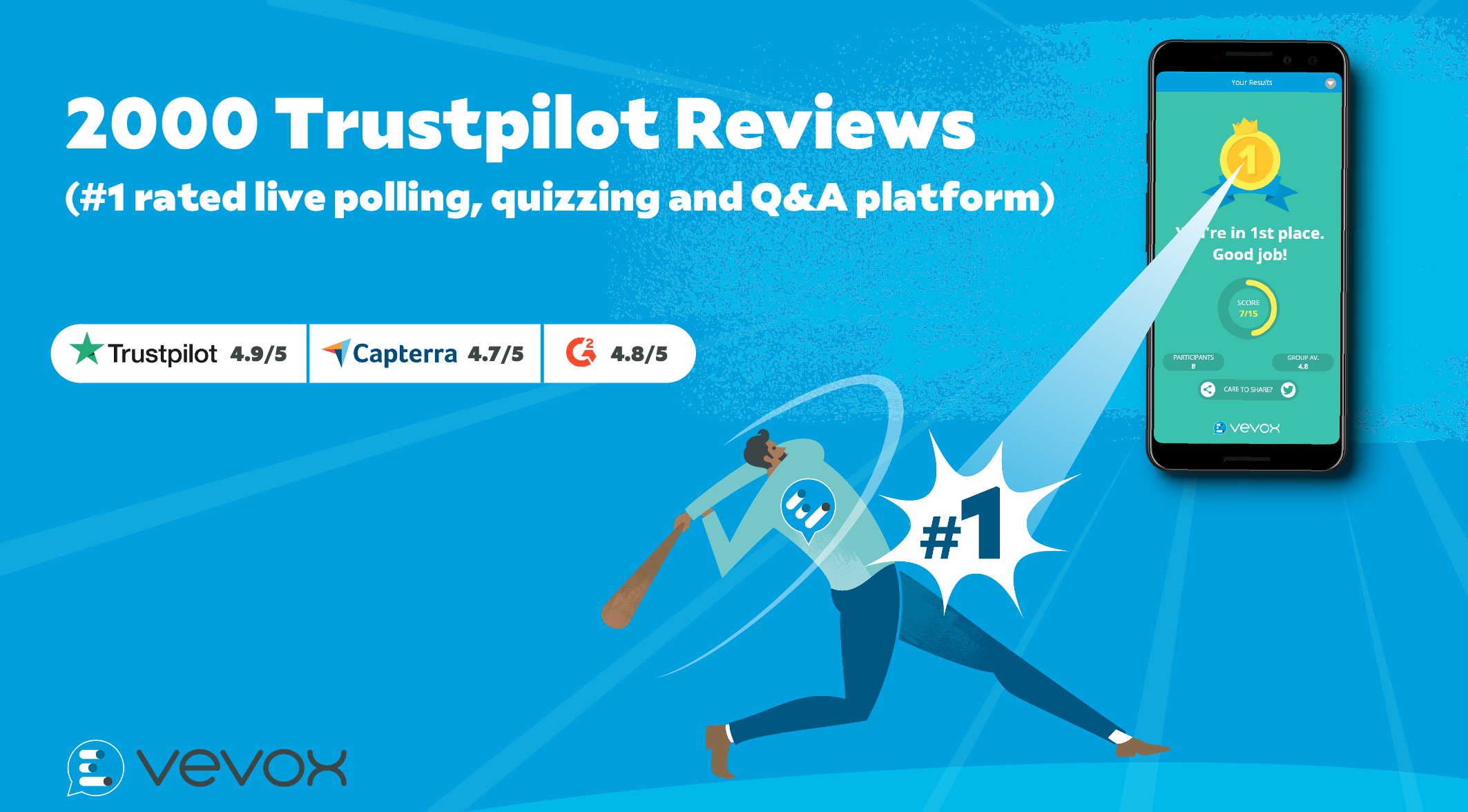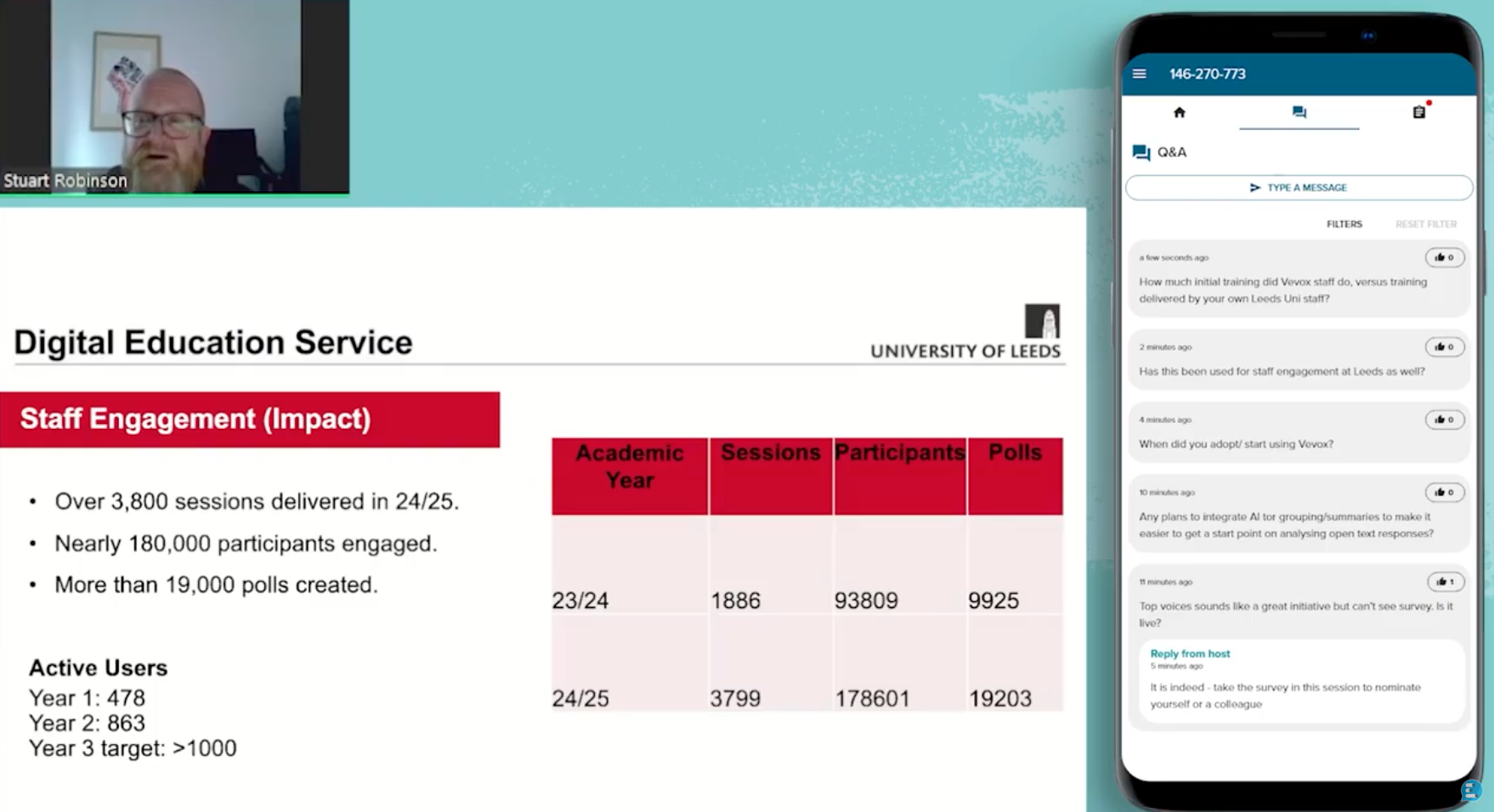The use of Vevox to provide the opportunity to get feedback from students, engage them in polling or surveys, setting quizzes – all sound positive, useful, and aligned to the concept of active blended learning.
However, it can also produce a fearful, or at the very least a troubled response – that was my initial feeling that gripped me when I started using Vevox.
I have used Vevox for the last 9 months with undergraduate students in sessions with between 50 to 70 of them in the room. I have outlined below 5 ways to use Vevox and some sessions have been more successful than others, mainly because I hadn’t thought carefully enough about the questions posed.
However, my experience of the Vevox session has made me (and I hope students) more cheerful than fearful. So here are 5 ways I have used Vevox – I hope they are useful.
1. Extracting & exploring student opinions:
Polling students in the room to determine their views on a particular subject. Using a single choice poll with Yes/No/Not Sure format e.g. Should people with mental health issues be sent to prison? Following up with a deeper more open question (using the open text poll or Q&A messaging feature) e.g. What is the purpose of prison? … and sharing back the responses for all to learn from.
2. Testing knowledge:
Setting quizzes for the students to test or check knowledge and using that information to focus on key points for future sessions. After using live polls or surveys, I share the results with the students to complete the feedback loop. This information then goes back into the next session to provide a bridge to the next subject area.
3. Supporting flipped learning:
Providing students with a documentary prior to the session and then asking them to respond to a Vevox survey about the documentary, prior to the formal session. Using the information provided in the survey to consider different perspectives. This information is then used to initially create discussion in classes.
4. Combining technologies:
We ran a collaborate session with students and then asked them to feedback on the advantages and disadvantages of the use of this facility via Vevox. There is an assumption that all students will respond well to the active blended learning approach, but it is no surprise to find they are not a homogeneous group who automatically embrace the concept. Gaining this feedback via Vevox helped us to appreciate that a varied flexible approach is needed to assist in the learning process rather than a dogmatic adherence to one methodology.
5. Module feedback:
Using Vevox surveys as an anonymous feedback facility to give lecturers interim feedback on modules that have previously received mixed feedback, to determine whether any changes made had the desired effect.
I have found that the vast majority of students engage really well with Vevox and enjoy the interactive experience. As the late, great, Ian Dury put it: “Something nice to study”.





